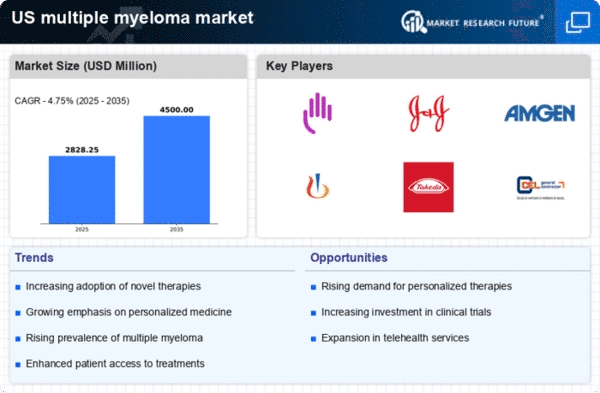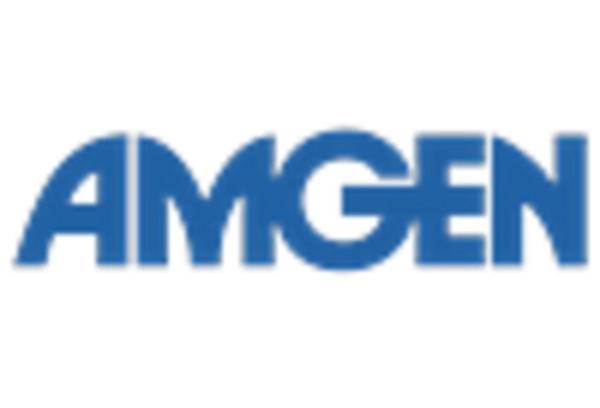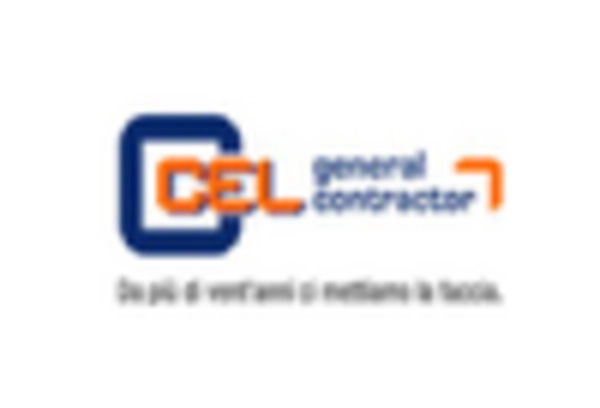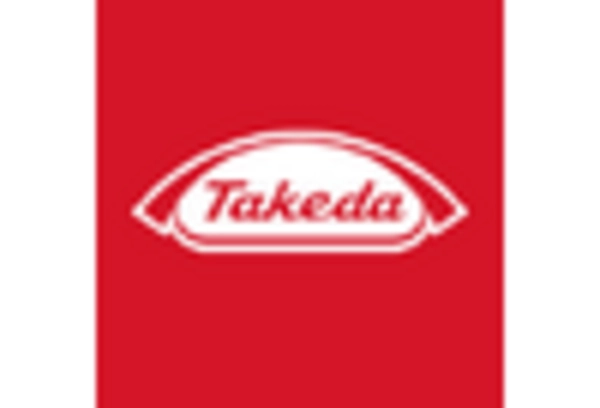Advancements in Research and Development
Ongoing advancements in research and development are significantly influencing the multiple myeloma-treatment market. The investment in R&D has surged, with pharmaceutical companies allocating substantial budgets to discover novel therapies. In 2025, it is estimated that R&D expenditures in oncology could reach $50 billion in the US, with a considerable portion directed towards multiple myeloma. This focus on innovation is likely to yield new treatment modalities, including monoclonal antibodies and CAR T-cell therapies, which have shown promising results in clinical trials. The continuous evolution of treatment options not only enhances patient outcomes but also drives market growth as healthcare providers seek the latest therapies to improve survival rates. Thus, the dynamic nature of R&D is a crucial factor shaping the multiple myeloma-treatment market.
Increasing Incidence of Multiple Myeloma
The rising incidence of multiple myeloma in the US is a primary driver for the multiple myeloma-treatment market. According to the American Cancer Society, approximately 34,000 new cases are diagnosed annually, with a notable increase in prevalence among older adults. This demographic shift is likely to escalate the demand for effective treatment options. As the population ages, the number of patients requiring therapy is expected to grow, thereby expanding the market. Furthermore, advancements in diagnostic techniques have led to earlier detection, which may contribute to a larger patient pool seeking treatment. Consequently, pharmaceutical companies are focusing on developing innovative therapies to address this growing need, indicating a robust market potential for stakeholders in the multiple myeloma-treatment market.
Growing Awareness and Education Initiatives
Increasing awareness and education initiatives regarding multiple myeloma are pivotal in driving the multiple myeloma-treatment market. Organizations such as the Multiple Myeloma Research Foundation are actively promoting education about the disease, its symptoms, and treatment options. This heightened awareness is likely to lead to earlier diagnosis and increased patient engagement in treatment decisions. As patients become more informed, they may seek out advanced therapies, thereby expanding the market. Additionally, healthcare professionals are receiving enhanced training on the latest treatment protocols, which may improve patient outcomes. The combination of patient education and professional training is expected to foster a more proactive approach to managing multiple myeloma, ultimately benefiting the multiple myeloma-treatment market.
Increased Investment in Healthcare Infrastructure
The ongoing investment in healthcare infrastructure in the US is a significant driver for the multiple myeloma-treatment market. Enhanced healthcare facilities and improved access to specialized care are likely to facilitate better treatment options for patients. In 2025, healthcare spending in the US is projected to exceed $4 trillion, with a portion allocated to oncology services. This investment is expected to support the development of comprehensive treatment centers that focus on multiple myeloma, providing patients with access to cutting-edge therapies and clinical trials. Furthermore, the expansion of telemedicine services may improve patient access to specialists, thereby increasing treatment adherence and outcomes. As healthcare infrastructure continues to evolve, it is anticipated that the multiple myeloma-treatment market will experience substantial growth.
Regulatory Changes Favoring Innovative Treatments
Regulatory changes favoring innovative treatments are shaping the landscape of the multiple myeloma-treatment market. The US Food and Drug Administration (FDA) has implemented expedited approval pathways for breakthrough therapies, which may accelerate the availability of new treatments. In recent years, the FDA has approved several novel therapies for multiple myeloma, reflecting a commitment to addressing unmet medical needs. This regulatory support is likely to encourage pharmaceutical companies to invest in the development of innovative therapies, as the approval process becomes more streamlined. As a result, the market may witness an influx of new treatment options, enhancing competition and potentially lowering costs for patients. The evolving regulatory environment is thus a critical factor influencing the dynamics of the multiple myeloma-treatment market.

















Leave a Comment